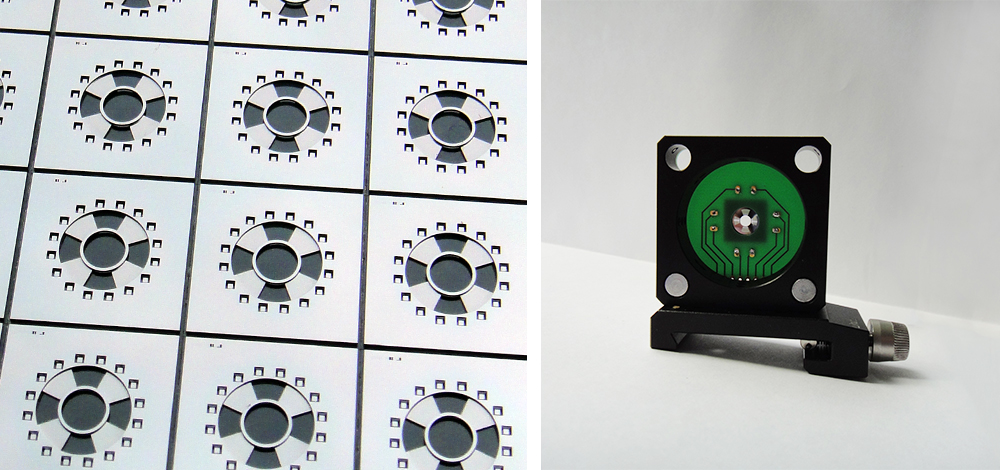Adjustable microlens with integrated polymer actuator

The optical imaging systems and cameras with autofocus and zoom functions typically require the physical displacement of lens elements to change the overall magnification of the optical system. This is usually accomplished by a large mechanical positioning unit. The large physical dimensions of such focus or zoom systems make it difficult to place such functions in miniaturized optical systems and cameras.
Researchers at Fraunhofer IPMS have developed a variable focal length microlens with a compact and adaptable design that can be incorporated into numerous miniaturized optical imaging systems. In the fluid-filled microlens, the radius of curvature of the lens - and thus the focal length - is adjusted by applying hydraulic pressure to the membrane. This pressure comes from the mechanical displacement of a fluid in a microfluidic silicon chamber by a voltage-controlled, electroactive polymer actuator with large deformation. The microlens is fabricated using wafer-level technology, which provides both high-precision generation of structures and proper alignment of optical elements, as well as enables easy production of larger quantities.
The variable focal length fluidic microlens features a compact design, apertures of a few millimeters, and a voltage-adjustable focus range of up to dozens of diopters. It can be integrated into minimized autofocus or zoom lenses - for example in cell phone cameras - or in optoelectronics, photonics or image-processing components and systems.
 Fraunhofer Institute for Photonic Microsystems
Fraunhofer Institute for Photonic Microsystems